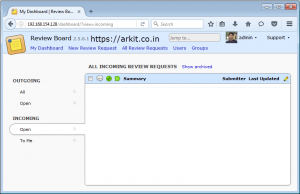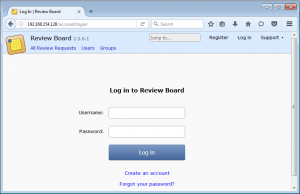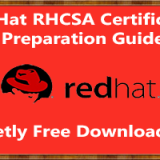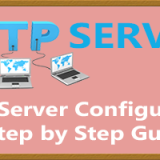ReviewBoard installation Centos 7 RHEL 7 step by step guide
ost of the organizations will have developers they develop software, programs by writing code. How did you know the code is applicable for approving to production. We can also run pre-script and post-script from ReviewBoard application. ReviewBoard installation Centos 7 RHEL 7 Step by Step Guide.
Advantages
- The simple method to Review your code
- Save your time and Cost
- You can review Pre-commit code
- You can review Post-Commit code
- Catch mistakes early
- Code review dramatically helps in the quality of products ReviewBoard installation Centos 7 RHEL 7
Step 1 Install Maria DB software to host ReviewBoard required Databases
To install and configure maria DB Software see Full installation guide
# systemctl restart mariadb # systemctl status mariadb [root@localhost ~]# mysql_secure_installation Enter current password for root (enter for none): ↵ Set root password? [Y/n] y New password: Re-enter new password: Password updated successfully! Reloading privilege tables.. ... Success! Remove anonymous users? [Y/n] y ... Success! Disallow root login remotely? [Y/n] y ... Success! Remove test database and access to it? [Y/n] y - Dropping test database... ... Success! - Removing privileges on test database... ... Success! Reload privilege tables now? [Y/n] y ... Success! Cleaning up... All done! If you've completed all of the above steps, your MariaDB installation should now be secure. Thanks for using MariaDB! Install and enable WSGI module to run the ReviewBoard Application
# yum install httpd openssl mod_ssl mod_wsgi
Start the Web service and check the status ReviewBoard installation Centos 7 RHEL 7
# systemctl restart httpd # systemctl status httpd
Check the Apache/Web server configuration
# apachectl configtest Syntax OK # systemctl enable httpd.service
Now Install ReviewBoard application ReviewBoard installation Centos 7 RHEL 7
# yum install ReviewBoard
Install and start the Memcached service
# yum install memcached python-memcached.noarch # systemctl restart memcached # systemctl status memcached
While installing ReviewBoard error comes then install below-required packages to fix the error. Manually download the install the packages.
Note: If you missed installing the proper installation of ReviewBoard you may not able to create site. rb-site command will not work.
Error: Package: ReviewBoard-2.5.6.1-1.el7.noarch (epel) Requires: python-pygments >= 1.4 Error: Package: ReviewBoard-2.5.6.1-1.el7.noarch (epel) Requires: python-docutils You could try using --skip-broken to work around the problem You could try running: rpm -Va --nofiles --nodigest # yum install python-imaging # rpm -ivh python-docutils-0.11-0.2.20130715svn7687.el7.noarch.rpm # rpm -ivh python-pygments-1.4-9.el7.noarch.rpm # yum install cvs git subversion python-subvertpy
Create MariaDB Database
Let’s Login to MariaDB Server and Create Database, provide permissions to User. Edit the MariaDB configuration file and add below four lines to a config file.
# vim /etc/my.cnf #cat /etc/my.cnf |tail -10 # include all files from the config directory # [client] default-character-set=utf8 [mysqld] character-set-server=utf8
Below are the steps to create a database in MariaDB
# mysql -u root -pmysql MariaDB [(none)]> CREATE DATABASE reviewboard CHARACTER SET utf8; Query OK, 1 row affected (0.00 sec) MariaDB [(none)]> CREATE USER 'user1'@'localhost' IDENTIFIED BY 'password'; Query OK, 0 rows affected (0.00 sec) MariaDB [(none)]> GRANT ALL PRIVILEGES ON reviewboard.* to 'user1'@'localhost'; Query OK, 0 rows affected (0.00 sec) MariaDB [(none)]> exit Bye
ReviewBoard installation Centos7 / RHEL7 Step by Step Guide – Create Site
First recommended step is to create the site in ReviewBoard Or else we can’t able to see the web console ReviewBoard installation Centos 7 RHEL 7
# rb-site install /var/www/html/reviewboard * Welcome to the Review Board site installation wizard This will prepare a Review Board site installation in: /var/www/html/reviewboard We need to know a few things before we can prepare your site for installation. This will only take a few minutes. * What's the host name for this site? This should be the fully-qualified host name without the http://, port or path. Domain Name: localhost * What URL path points to Review Board? Typically, Review Board exists at the root of a URL. For example, http://reviews.example.com/. In this case, you would specify "/". However, if you want to listen to, say, http://example.com/reviews/, you can specify "/reviews/". Note that this is the path relative to the domain and should not include the domain name. The default is / Root Path [/]: * What database type will you be using? You can type either the name or the number from the list below. (1) mysql (2) postgresql (3) sqlite3 (not supported for production use) Database Type: 1 * What database name should Review Board use? NOTE: You need to create this database and grant user modification rights before continuing. See your database documentation for more information. The default is reviewboard Database Name [reviewboard]: * What is the database server's address? This should be specified in hostname:port form. The port is optional if you're using a standard port for the database type. The default is localhost Database Server [localhost]: * What is the login and password for this database? This must be a user that has table creation and modification rights on the database you already specified. Database Username: user1 Database Password: Confirm Database Password: * What memcached host should be used? This is in the format of hostname:port The default is localhost:11211 Memcache Server [localhost:11211]: * Create an administrator account The default is admin Username [admin]: Password: Confirm Password: E-Mail Address: aravikumar48@gmail.com Company/Organization Name (optional): * Enable collection of data for better support You can choose to turn this off at any time in Support Settings in Review Board. Allow us to collect support data? [Y/n]: y
Installing custom SQL ... Installing indexes ... Installed 0 object(s) from 0 fixture(s) OK Performing migrations ... No evolution required. OK Creating administrator account ... OK Saving site settings ... Saving site /var/www/html/reviewboard to the sitelist /etc/reviewboard/sites OK Setting up support ... OK * The site has been installed The site has been installed in /var/www/html/reviewboard Sample configuration files for web servers and cron are available in the conf/ directory. You need to modify the ownership of the following directories and their contents to be owned by the web server: * /var/www/html/reviewboard/htdocs/media/uploaded * /var/www/html/reviewboard/htdocs/media/ext * /var/www/html/reviewboard/htdocs/static/ext * /var/www/html/reviewboard/data
Change the permissions of the web hosting path directories
# chown -R apache /var/www/html/reviewboard/
Copy the Apache configuration file from /var/www/html/reviewboard/conf/ directory to /etc/httpd/conf.d/ directory
# cp /var/www/html/reviewboard/conf/apache-wsgi.conf /etc/httpd/conf.d/reviewboard.conf
Delete all default web configuration files
# rm -rf autoindex.conf README ssl.conf userdir.conf welcome.conf
Change the settings.py file string in review board installation path
# vim /var/www/html/reviewboard/conf/settings_local.py ALLOWED_HOSTS = ['*']
After the change in settings.py file restart the Apache web server to effect the changes
# systemctl restart httpd # systemctl status httpd # systemctl stop firewalld.service # systemctl disable firewalld.service
That’s it your application is ready to use. ReviewBoard installation Centos 7 RHEL 7
Related Articles
ReviewBoard Ubuntu Installation Step by Step Guide
Thanks for your wonderful Support and Encouragement
- Get Email | Download E-Books
- Facebook Page
- Youtube Channel
- Exclusive Telegram Group
- Discuss On WhatsApp Group









Thank you very much for such a good installation guide.
Please share a same kind of document guide for gerrit installation using mysql database.
Very good installation guide. I successfully installed Reviewboard and it works fine. Thanks.
Very nice description and clearer than one in the reviewboard site
Kudos.Nice one
Hi,
I’m getting below error, Kindly help how to fix this error
Something broke! (Error 500)
It appears something broke when you tried to go to here. This is either a bug in Review Board or a server configuration error. Please report this to your administrator.